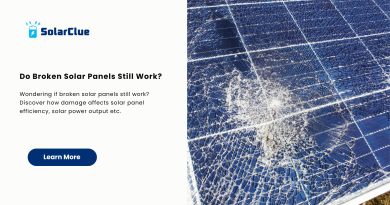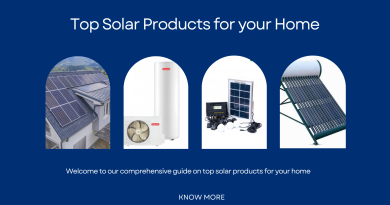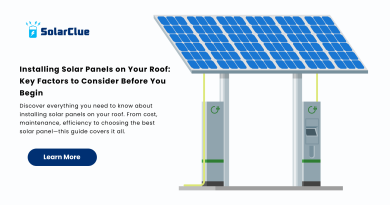Are Solar Cells And Solar Panels The Same Thing?
Solar energy is a rapidly growing field, with solar cells and solar panels playing crucial roles in harnessing the power of the sun. While the terms are often used interchangeably, solar cells and solar panels have distinct roles in a solar power system. This blog post explains the differences between these components, how they work together, and their applications in various settings.
Table of Contents
- 1 The Basic Unit of Solar Power: The Solar Cell
- 1.1 Combining Solar Cells into Solar Panels
- 1.2 Comparison of Solar Cells and Solar Panels
- 1.3 Applications for Solar Cells and Solar Panels
- 1.4 Efficiency Differences Between Solar Cells and Panels
- 1.5 The Future of Solar Cell and Panel Technology
- 1.6 Common Misconceptions About Solar Cells and Panels
- 1.7 The Role of Solar Cells and Panels in Renewable Energy
- 1.8 Conclusion
- 1.9 FAQ Section
The Basic Unit of Solar Power: The Solar Cell
What is a Solar Cell?
- Definition: A solar cell, also known as a photovoltaic (PV) cell, is the basic unit of a solar power system. It converts sunlight directly into electricity through the photovoltaic effect.
- Construction: Solar cells are typically made from semiconductor materials, such as silicon, that absorb sunlight and release electrons, generating an electric current.
The Photovoltaic Effect:
- How It Works: When sunlight strikes the surface of a solar cell, it excites electrons in the semiconductor material. These excited electrons move, creating a flow of electric current that can be harnessed for power.
Combining Solar Cells into Solar Panels
What is a Solar Panel?
- Definition: A solar panel is a collection of solar cells connected in series and parallel to increase the voltage and current output, making it suitable for practical applications like powering homes or businesses.
- Structure: Solar panels consist of multiple solar cells encapsulated within protective layers of glass and a frame, ensuring durability and longevity.
The Role of Solar Panels in a Solar Power System:
- Energy Generation: Solar panels generate a higher output of electricity by combining the power of multiple solar cells, making them more efficient for large-scale energy production.
- Configuration: Panels can be connected to form arrays, increasing the total energy output and meeting the energy needs of larger applications.
Comparison of Solar Cells and Solar Panels
| Aspect | Solar Cell | Solar Panel |
|---|---|---|
| Definition | Basic unit that converts sunlight to electricity | Collection of solar cells that generates usable electricity |
| Structure | Single photovoltaic cell | Multiple cells connected and encapsulated in a protective frame |
| Output | Low voltage and current | High voltage and current, suitable for practical use |
| Applications | Small devices, experimental setups | Residential, commercial, and industrial power generation |
| Efficiency | Efficiency is measured per cell | Overall efficiency depends on the number of cells and configuration |
Applications for Solar Cells and Solar Panels
Solar Cells:
- Small-Scale Applications: Individual solar cells are used in calculators, watches, and small portable devices. They are also used in research and experimental setups where only small amounts of power are needed.
- Education and Testing: Solar cells are often used in educational kits to teach the basics of solar energy and in laboratories for testing and development of new solar technologies.
Solar Panels:
- Residential Power: Solar panels are commonly installed on rooftops to generate electricity for homes, reducing reliance on the grid and lowering electricity bills.
- Commercial and Industrial Use: Large solar panel arrays are used in businesses, factories, and solar farms to provide significant amounts of renewable energy.
- Off-Grid Systems: Solar panels are crucial in off-grid systems, providing power in remote areas without access to traditional electricity.
Efficiency Differences Between Solar Cells and Panels
Individual Efficiency:
- Solar Cell Efficiency: The efficiency of a solar cell is measured by how much sunlight it can convert into usable electricity. This efficiency varies based on the material and technology used.
- Solar Panel Efficiency: The efficiency of a solar panel is determined by the combined efficiency of its individual cells and the effectiveness of the overall configuration. Panel efficiency also considers factors like shading, temperature, and panel orientation.
The Future of Solar Cell and Panel Technology
Advancements:
- Higher Efficiency Cells: Research is ongoing to develop solar cells with higher efficiency, using materials like perovskite and multi-junction cells.
- Integrated Systems: The future may see more widespread use of building-integrated photovoltaics (BIPV), where solar cells are integrated into building materials, such as windows and roofs.
Sustainability:
- Recycling: As solar technology advances, more emphasis is being placed on recycling solar cells and panels to minimize environmental impact.
- Cost Reduction: Continuous improvements in manufacturing processes are making solar cells and panels more affordable, further driving adoption.
Common Misconceptions About Solar Cells and Panels
- Myth: Solar cells and solar panels are the same.
- Fact: Solar cells are the basic units that make up solar panels. Panels are composed of many cells working together to generate usable electricity.
- Myth: A single solar cell can power a house.
- Fact: A single solar cell produces only a small amount of electricity. Multiple cells must be combined into a panel or array to generate enough power for a house.
The Role of Solar Cells and Panels in Renewable Energy
Contribution to Clean Energy:
- Reduction of Carbon Footprint: Solar panels, made up of many solar cells, contribute significantly to reducing carbon emissions by providing a renewable source of energy.
- Energy Independence: Solar technology enables energy independence by allowing individuals and communities to generate their own electricity.
Global Impact:
- Widespread Adoption: The increasing efficiency and affordability of solar panels are making renewable energy more accessible worldwide, contributing to a shift away from fossil fuels.
Conclusion
Solar cells and solar panels are integral components of solar energy systems, each playing a vital role in the generation of clean, renewable electricity. While solar cells are the building blocks, solar panels combine the power of multiple cells to provide a practical and scalable energy solution. Understanding the differences between these components and their applications can help you make informed decisions about incorporating solar energy into your life.
Here at SolarClue®, we offer a smart, practical, and “beautiful” solution. You will be answered for all the questions related to Solar.
We provide all kinds of brands that are the Best Solar panels in India.
If you are the one who is planning for the solar power system. Don’t hesitate to contact our team!
Looking forward to empowering you with solar energy, just like hundreds of our other clients!
FAQ Section
1. What is the difference between a solar cell and a solar panel?
A solar cell is the basic unit that converts sunlight into electricity, while a solar panel is a collection of solar cells connected together to generate a larger amount of electricity.
2. Can a single solar cell power a device?
Yes, a single solar cell can power small devices like calculators or watches, but for larger power needs, multiple cells are combined into a solar panel.
3. How do solar panels generate more electricity than solar cells?
Solar panels generate more electricity by combining the output of many solar cells. This increased output makes panels suitable for powering homes and businesses.
4. What are some common applications of solar panels?
Solar panels are used for residential and commercial power generation, off-grid systems, and in solar farms to produce large amounts of renewable energy.
5. Are solar panels more efficient than individual solar cells?
The efficiency of a solar panel is influenced by the efficiency of its individual cells, but the overall configuration of the panel and its installation can impact the efficiency of the system as a whole.



